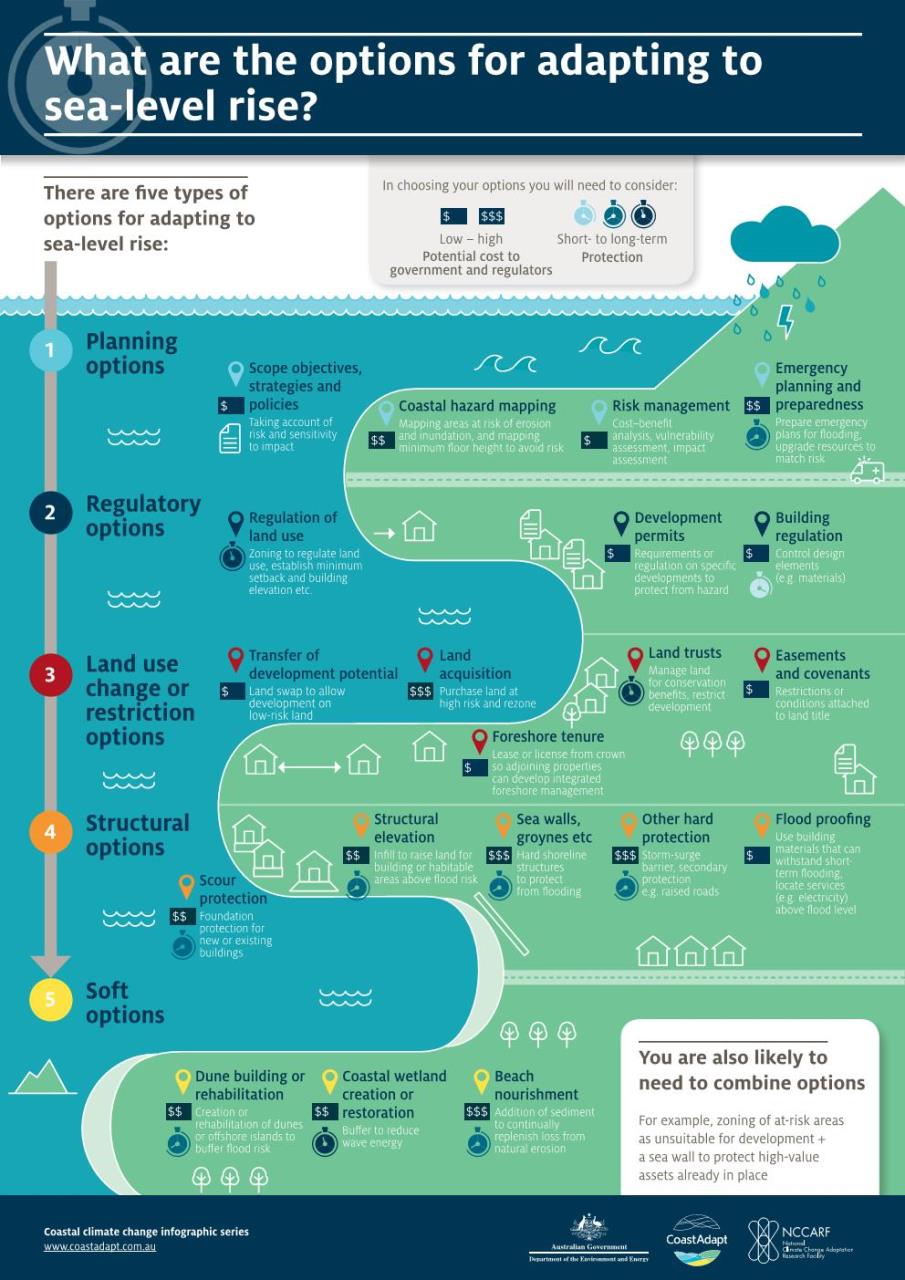What are the options for adapting to erosion and inundation?
There are six types of options which could be implemented to adapt to coastal erosion and inundation.
In choosing an option, the potential cost to government and regulators must be taken into consideration and the duration of the option in the short to long term.
Types of Options
1. Planning Options
This involves undertaking coastal hazard mapping; managing the risk via a vulnerability and impact assessment and cost benefit analysis of the options; and preparing emergency plans for flooding.
2. Regulatory Options
This involves implementing zoning to regulate land use, establishing a minimum setback, build elevations, etc… Development permits would require developers to provide protection from the hazard whilst building regulation would control the design elements (i.e. materials used).
3. Land Use Change or Restriction Options
This involves either swapping land to allow development on low risk land or purchasing land in high risk areas and rezoning it. Easements and covenants could restrict or place conditions on a land title; Land trusts would manage land for conservation whilst restricting development; and foreshore tenure in the way of a lease or licence from the crown would enable an integrated foreshore management plan to be developed and implemented.
4. Structural Options
This involves infilling land to a height above the flood risk, building hard shoreline structure to protect from flooding, developing storm-surge barriers or secondary protection (i.e. raised roads) or flood proofing buildings by using materials that can withstand short-term flooding whilst relocating utilities above flood level.
5. Soft Options
This involves the creation or rehabilitation of dunes or offshore islands to buffer flood risk, creating of restoring coastal wetlands to reduce wave energy or nourishing beaches by continually adding sediments to replenish the loss of land.
6. Social, Community and Educational Options
This involves participation by the community in adaptation projects, and their acceptance and support for these projects are vital components of success. Without community support an adaptation action Is less likely to succeed, whether in planning, engineering or ecosystem management.
Can more than one option be used to adapt to changes?
Long term adaptation planning may combine options such as zoning high risk areas as unsuitable for development and restoring the dunes to help protect assets already in place.
